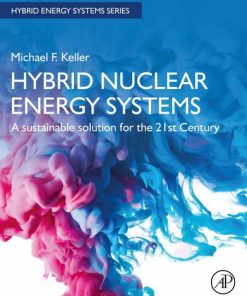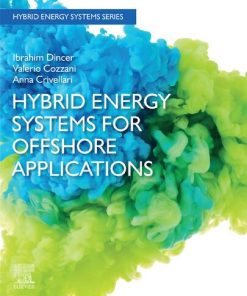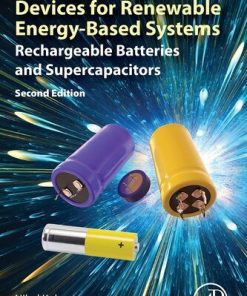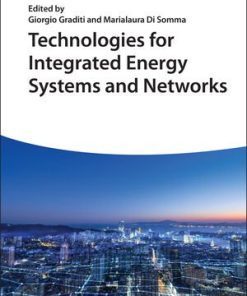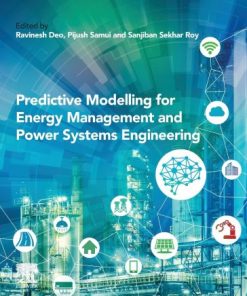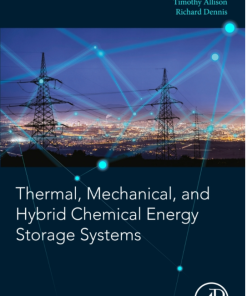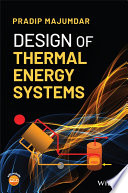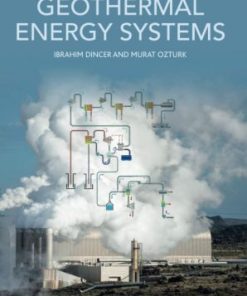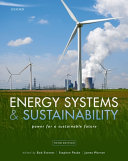(Ebook PDF) Machinery and Energy Systems for the Hydrogen Economy 1st edition by Timothy Allison, Klaus Brun ISBN 0323903940 9780323903943 full chapters
$50.00 Original price was: $50.00.$25.00Current price is: $25.00.
(Ebook PDF) Machinery and Energy Systems for the Hydrogen Economy 1st edition by Timothy Allison, Klaus Brun-Ebook PDF Instant Download/Delivery:9780323903943, 0323903940
Instant download Full Chapter of Machinery and Energy Systems for the Hydrogen Economy 1st edition after payment
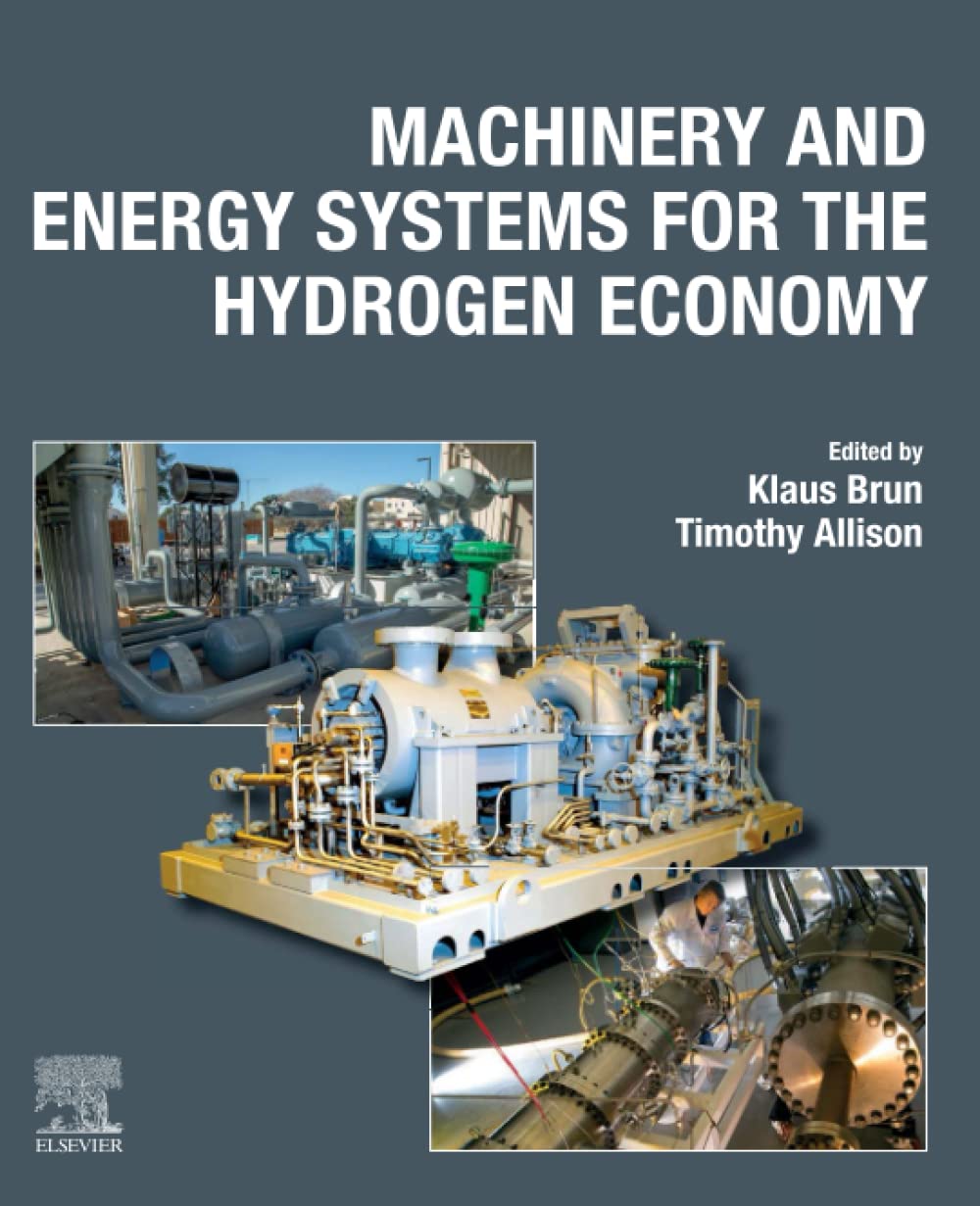
Product details:
ISBN 10: 0323903940
ISBN 13: 9780323903943
Author: Timothy C. Allison, Klaus Brun
Machinery and Energy Systems for the Hydrogen Economy covers all major machinery and heat engine types, designs and requirements for the hydrogen economy, from production through storage, distribution and consumption. Topics such as hydrogen in pipeline transport, for energy storage, and as a power plant fuel are covered in detail. Hydrogen machinery applications, their selection criteria, economics, safety aspects and operational limitations in different sectors of the hydrogen economy are also discussed. Although the book covers the hydrogen economy as a whole, its primary focus is on machinery and heat engine design and implementation within various production, transport, storage and usage applications.
Table of contents:
Chapter 1: Machinery in the energy future
Abstract
1.1: The hydrogen economy
1.2: Energy sources
1.3: The role of machinery
1.4: Competition with electrochemistry
1.5: Ongoing issues
1.6: Machinery in the energy future
References
Section A: Hydrogen background
Chapter 2: Fundamentals
Abstract
2.1: Physical and chemical properties of hydrogen
2.2: Fundamental hydrogen reaction kinetics
2.3: Hydrogen combustion properties
References
Chapter 3: Machinery basics
Abstract
3.1: Introduction
3.2: Machinery
References
Further reading
Chapter 4: Heat engines
Abstract
4.1: Thermodynamic principles
4.2: Conventional engine cycles
4.3: Emerging cycle innovations
References
Section B: Hydrogen applications and markets
Chapter 5: Supply processes and machinery
Abstract
5.1: Introduction
5.2: The color of hydrogen
5.3: Coal gasification
5.4: Hydrogen reformation processes
5.5: Emerging technologies
5.6: Hydrogen natural gas mixture compatibility and separation options
References
Chapter 6: Transport and storage
Abstract
6.1: Introduction
6.2: Pipeline transport
6.3: Transport considerations for blue, turquoise, and green hydrogen
6.4: Shipping liquid hydrogen
6.5: Transport by trucks
6.6: Hydrogen transport and storage with other chemicals
6.7: Hydrogen storage
References
Further reading
Chapter 7: Usage
Abstract
7.1: Introduction
7.2: Hydrogen used to produce electricity—Power generation plants
7.3: Automotive transportation
7.4: Other transportation
7.5: Refinery and chemical industry (including bio refinery and LNG)
7.6: Distribution
References
Further reading
Chapter 8: Economics of hydrogen fuel
Abstract
8.1: Introduction
8.2: Hydrogen energy content
8.3: Present hydrogen price
8.4: Present hydrogen production
8.5: Arbitrage issues
8.6: Theoretical prices: Gray, blue, and green
8.7: Fuel cells vs. mechanical engines
8.8: Electrochemistry cost issues
8.9: Carbon sequestration cost issues
References
Section C: Machinery and heat engine design consideration
Chapter 9: Compressors and expanders
Abstract
9.1: Centrifugal compressors
9.2: Reciprocating compressors
9.3: Diaphragm compressors
9.4: Screw compressors
9.5: Compressor station and pipeline considerations for hydrogen mixtures
9.6: Features of hydrogen turboexpanders
9.7: Hydrogen liquefaction
References
Further reading
Chapter 10: Power generation and mechanical drivers
Abstract
10.1: Gas turbines (Rainer, Mounir, Goldmeer, Freund)
10.2: Gas engines
10.3: Risks associated with hydrogen power generation equipment
References
Further reading
Section D: Materials and safety considerations
Chapter 11: Materials for the hydrogen economy
Abstract
11.1: Introduction
11.2: Hydrogen interactions and effects on material performance
11.3: Characterization of hydrogen solubility, trapping, and transport in metals
11.4: LTDMS analysis
11.5: Materials for high-pressure hydrogen compression and transportation
11.6: Magnetic materials and bonding agents for hydrogen machinery
References
Chapter 12: Safety
Abstract
12.1: Introduction
12.2: Operational issues
12.3: Safety events and lessons learned
12.4: Codes and standards
References
Section E: Research and testing
Chapter 13: Major test facilities, pilot plants, and R&D projects
Abstract
13.1: Introduction
13.2: Hydrogen test facilities and R&D programs in the United States
13.3: Hydrogen test facilities and R&D programs in Spain and other European countries (Eugenio Trillo León)
13.4: Hydrogen test facilities and R&D projects in Japan
References
Chapter 14: Novel and leading-edge technology development
Abstract
14.1: Hydrogen from solar thermal energy
14.2: Hydrogen from wind energy
14.3: Hydrogen from nuclear energy
14.4: Hydrogen from hydropower
14.5: Hydrogen from tidal power
14.6: Hydrogen from oceanic thermal energy conversion
14.7: Alternative hydrogen carriers
14.8: Advanced compressors and valves
14.9: Advances in heat exchangers: High-temperature and high-pressure heat exchangers for high efficiency and light energy conversion systems
References
Chapter 15: Green hydrogen market and growth
Abstract
15.1: The hydrogen market
15.2: Green and low-carbon hydrogen
15.3: The EU hydrogen strategy—A phased approach
15.4: Fundamentals of hydrogen production through water electrolysis
15.5: Technical feasibility of the EU targets for 2024 and 2030: Hydrogen generation capacity
15.6: Requirements for additional renewable power generation capacity and stress on market deployment
15.7: Discussion
15.8: Economic considerations about the impact of renewable energy deployment on the price of electricity (and hydrogen)
15.9: Conclusion
People also search:
machinery and energy systems for the hydrogen economy pdf
what are the three basic energy systems
how much does it cost to produce hydrogen energy
hydrogen powered machinery
a machine used to generate electricity
Tags:
Machinery and Energy Systems,Hydrogen Economy,Timothy Allison,Klaus Brun
You may also like…
Technique - Energy: Renewable Energy
Engineering - Energy & Power Resources
Technologies for Integrated Energy Systems and Networks 1st Edition Giorgio Graditi
Mathematics - Applied Mathematics
Engineering - Energy & Power Resources




